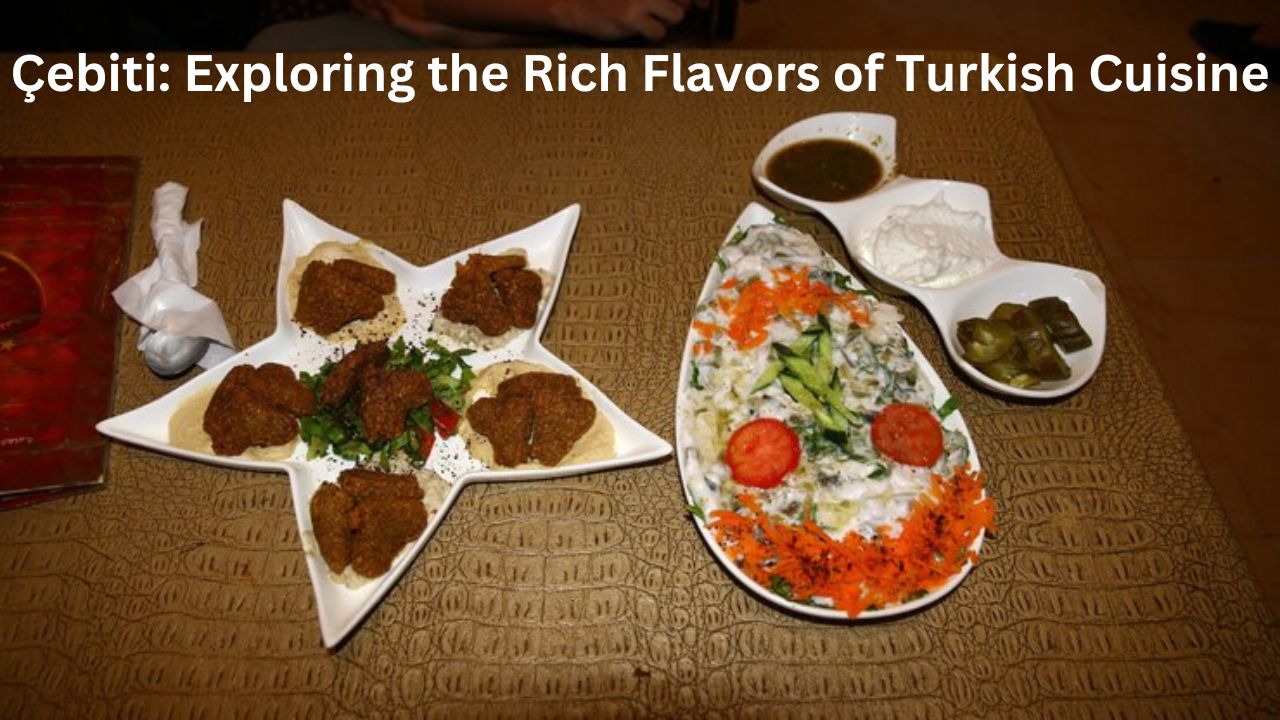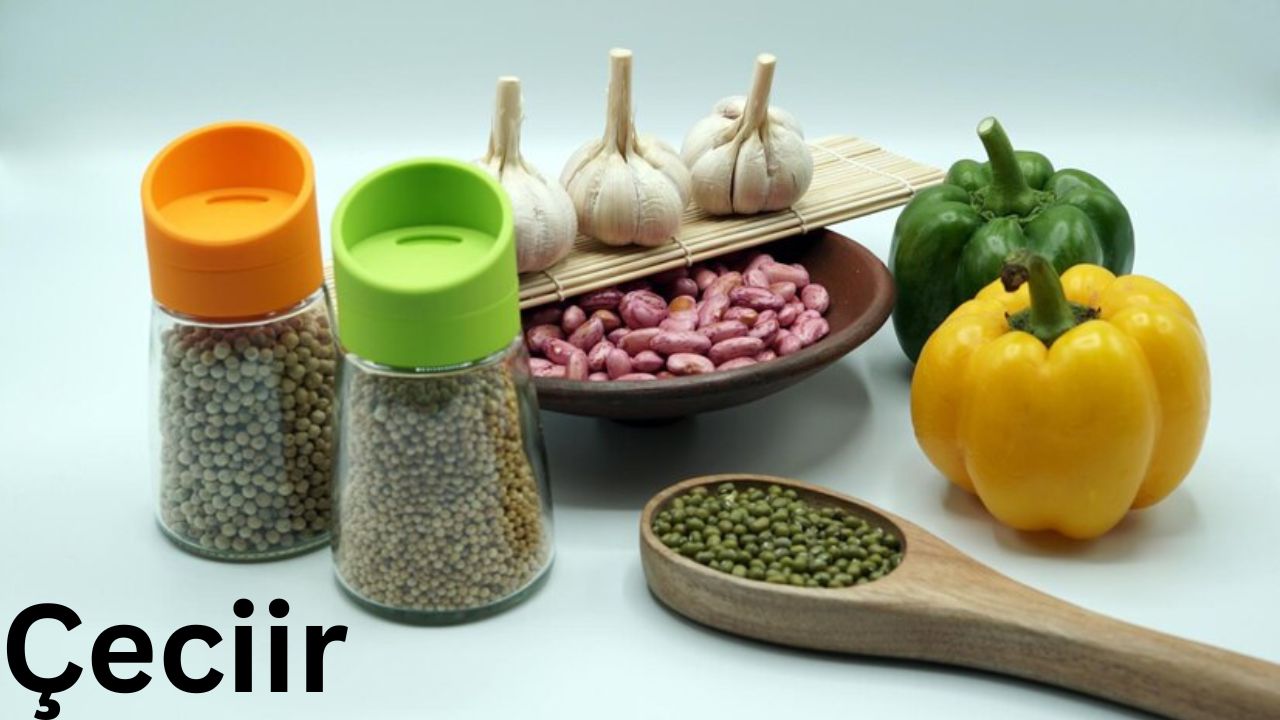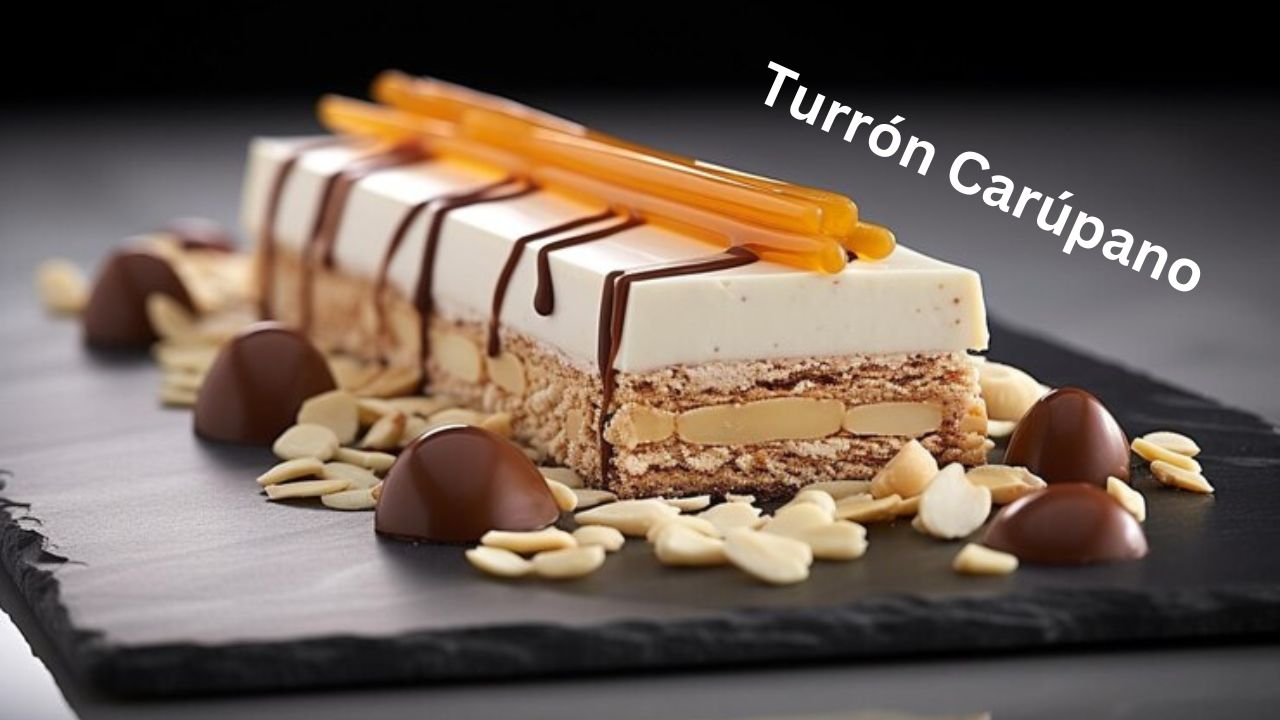Food
Napolitá Cuisine: Indulge in the flavors of Taste

Napolitá cuisine_Nestled in the heart of Italy lies a culinary treasure waiting to be discovered. From its rich history to its tantalizing flavors, Napolitá cuisine captivates the senses and leaves a lasting impression on all who taste it.
The Origins of Napolitá Cuisine
Dating back centuries, Napolitá cuisine has been shaped by a myriad of influences, including Greek, Roman, and Arabic cultures. This melting pot of culinary traditions has resulted in a diverse and, a vibrant food culture unique to the region.
Ancient Beginnings The origins of Neapolitan cuisine can be traced back to ancient civilizations that inhabited the region, including the Greeks, Romans, and Arabs. Each culture left its mark on the culinary landscape, introducing ingredients, cooking techniques, and flavor profiles that would shape Neapolitan cuisine for centuries to come.
The Ingredients:
Freshness is a Key: At the heart of Neapolitan cuisine lies a deep reverence for fresh, locally sourced ingredients. From the sun-kissed tomatoes to the fragrant basil and creamy mozzarella, every element of a Neapolitan dish is carefully selected to ensure maximum flavor and authenticity.
1. Tomatoes
The Soul of Neapolitan Cooking: Ripe, juicy tomatoes are the cornerstone of Neapolitan cuisine, imparting a rich sweetness and vibrant color to dishes. Whether used in sauces, salads, or atop pizzas, the tomatoes of Naples are: in flavor and quality, thanks to the region’s fertile soil and Mediterranean climate.
2. Basil
A Fragrant Finishing Touch: Fresh basil adds a burst of aromatic freshness to Neapolitan dishes, enhancing the flavors of tomatoes, pasta, and seafood alike. Whether torn into a rustic sauce or used as a garnish, basil is a staple herb in Neapolitan cooking, prized for its peppery, slightly sweet flavor.
3:Mozzarella
Creamy Perfection: No discussion of Neapolitan cuisine would be complete without mentioning mozzarella, the creamy, melt-in-your-mouth cheese that features prominently in many dishes. Made from fresh buffalo milk or cow’s milk, mozzarella adds a luxurious creaminess to pizzas, pasta, and salads, elevating every bite to new heights of indulgence.
4. Seafood
Gifts from the Mediterranean: With its stunning coastline and abundant waters, Naples is a seafood lover’s paradise. From plump shrimp and tender calamari to delicate fish and briny shellfish, the bounty of the Mediterranean Sea is showcased in Neapolitan dishes, adding depth and complexity to every meal.
5. Olive Oil
Liquid Gold: Olive oil, often referred to as “liquid gold,” is a fundamental ingredient in Neapolitan cooking, used for everything from sautéing vegetables to drizzling over salads and bread. With its fruity flavor and rich aroma, extra virgin olive oil adds a luxurious touch to Neapolitan dishes, tying together flavors and enhancing the overall dining experience.
Exploring Napolitá Elegance
Embark on a gastronomic journey through the streets of Naples and discover a world of mouthwatering delicacies that define the essence of Neapolitan cuisine. From iconic pizzas to hearty pasta dishes and indulgent desserts, Napolitá delicacies are a true celebration of flavor, tradition, and passion.
1. Pizza Napoletana
A Slice of Heaven: At the heart of Napolita cuisine lies the beloved Pizza Napoletana, a culinary masterpiece that has captured the hearts and taste buds of food lovers around the globe. Characterized by its thin, chewy crust, flavorful tomato sauce, and fresh mozzarella cheese, Pizza Napoletana is a testament to the artistry and craftsmanship of Neapolitan pizza makers.
2. Pasta alla Genovese
A Taste of Tradition: Indulge in the comforting flavors of Pasta alla Genovese, a hearty dish that embodies the soul of Neapolitan home cooking. Made with slow-cooked beef, onions, and a generous sprinkling of Parmesan cheese, Pasta alla Genovese is a celebration of simple ingredients and time-honored techniques, resulting in a dish that is both satisfying and soul-warming.
3. Sfogliatella (a food, small and thin leaf/layer)
A Sweet Symphony: No visit to Naples would be complete without sampling the iconic sfogliatella (a food small, thin leaf/layer), a crispy, flaky pastry filled with creamy ricotta cheese and fragrant citrus zest. With its delicate layers and irresistible filling, sfogliatella (a food small, thin leaf/layer) is a quintessential Neapolitan treat that delights the senses and leaves a lasting impression on all who taste it.
4. Baba au Rhum
A Boozy Indulgence: Indulge your sweet tooth with the decadent flavors of Baba au Rhum, a moist and spongy cake soaked in rum syrup and topped with a dollop of freshly whipped cream. With each bite, the rich aroma of rum mingles with the sweetness of the cake, creating a symphony of flavors that is both luxurious and irresistible.
The Art of Napolitá Cooking
Napolitá cuisine is as much about technique as it is about ingredients. From the meticulous hand-kneading of pizza dough to the slow simmering of sauces, each dish is crafted with care and attention to detail.
1. Hand-Kneading Pizza Dough
Central to Neapolitan cuisine is the art of hand-kneading pizza dough, a technique that requires patience, skill, and a deep understanding of the dough’s texture and elasticity. Neapolitan pizza makers, known as pizzaiola, spend years perfecting their craft, gently stretching and shaping the dough to achieve the perfect balance of thickness and crispness.
2. Slow-Simmering Sauces
In Neapolitan cooking, sauces are more than just a topping – they’re the foundation of a dish, providing depth, richness, and complexity of flavor. Whether it’s a simple tomato sauce for pasta or a hearty ragù for lasagna, Neapolitan cooks take pride in the slow, methodical process of simmering ingredients to perfection, allowing flavors to meld and develop over time.
3. Seasonal Ingredients
Neapolitan cuisine is deeply rooted in the rhythms of the seasons, with dishes changing to reflect the bounty of the land and sea throughout the year. From ripe tomatoes and basil in the summer to hearty root vegetables and leafy greens in the winter, Neapolitan cooks embrace seasonal ingredients with gusto, allowing their natural flavors to shine in every dish.
4. Balancing Old and New
While steeped in tradition, Neapolitan cooking is also a dynamic and evolving art form, with chefs and home cooks continually experimenting with new ingredients and techniques. Whether it’s adding a modern twist to a classic dish or reinventing traditional flavors in innovative ways, Neapolitan cooks celebrate the past while looking toward the future.
5. Preserving the Past, Celebrating the Future
In Neapolitan cooking, the past is not just a memory – it’s a living, breathing part of everyday life. By preserving age-old techniques and honoring time-honored traditions, Neapolitan cooks ensure that the rich culinary heritage of Naples continues to thrive and inspire future generations of food lovers around the world.
Napolitá Culture Through Food
In Napolitá culture, food is more than just sustenance – it’s a way of life. From bustling street markets to intimate family gatherings, every meal is an opportunity to celebrate community, heritage, and tradition.
Embark on a journey through the streets of Naples, where every meal is a celebration of community, heritage, and tradition. In Neapolitan culture, food is more than just sustenance – it’s a way of life, a reflection of the city’s rich history and vibrant spirit.
1. Bustling Street Markets
Wander through the bustling street markets of Naples and you’ll encounter a kaleidoscope of colors, aromas, and flavors that tantalize the senses. From vibrant displays of fresh produce to fragrant herbs and spices, the market is a melting pot of culinary delights, where locals gather to shop, socialize, and savor the bounty of the land and sea.
2. Family Gatherings
In Neapolitan culture, family is everything, and no gathering is complete without a feast to share. From festive holidays to Sunday dinners, family gatherings are an opportunity to reconnect with loved ones, share stories and laughter, and indulge in a bountiful spread of homemade dishes that showcase the best of Neapolitan cuisine.
3. The Ritual of the Passeggiata
The passeggiata (Name of a tradition), or leisurely (Name of a tradition) stroll, is a beloved Neapolitan tradition that takes on a culinary twist as locals wander from one café to another, sampling espresso, pastries, and gelato along the way. It’s a chance to see and be seen, to catch up with friends and neighbors, and to enjoy the simple pleasures of good food and good company.
4. Festivals and Fiestas
Throughout the year, Naples comes alive with a calendar of festivals and fiestas that pay homage to the city’s patron saints, historical events, and cultural traditions. From the colorful processions of Carnival to the solemn rituals of Holy Week, food plays a central role in these celebrations, with street vendors dishing out traditional treats and families gathering for elaborate feasts.
5. Diversity in Unity
Neapolitan cuisine is as diverse as the city itself, drawing inspiration from a melting pot of cultures and culinary traditions. From Greek and Roman influences to Arab and Spanish flavors, Naples’ unique position as a cultural crossroads is reflected in its vibrant and eclectic food scene, where every dish tells a story of migration, innovation, and adaptation.
6. Every Bite Tells a Story
In Naples, food is more than just a meal – it’s a journey, a celebration, and a testament to the enduring spirit of a city that has captured the hearts and imaginations of food lovers around the world. So come, pull up a chair, and savor the flavors of Naples, where every bite tells a story of love, history, and tradition.
Experience Napolitá
Where Tradition Meets Innovation: Whether you’re indulging in a classic Margherita pizza or exploring innovative takes on traditional dishes, a culinary journey through Napolitá is sure to delight the palate and nourish the soul. So, why wait? Come experience the magic of Napolitá cuisine for yourself and embark on a gastronomic adventure like no other.
In conclusion, the journey through Neapolitan cuisine has been a captivating exploration of flavors, traditions, and cultural heritage. From the bustling street markets to the intimate family gatherings, each aspect of Neapolitan culture revolves around food – a testament to the city’s deep-rooted culinary identity.
Frequently Asked Questions (FAQs)
As you delve into the world of Neapolitan cuisine, you may have some burning questions. Here are some frequently asked questions along with their answers:
1. What makes Neapolitan cuisine unique?
- Neapolitan cuisine is unique due to its rich history, diverse influences, and emphasis on fresh, locally sourced ingredients. The use of ingredients like San Marzano tomatoes, buffalo mozzarella, and fragrant basil sets Neapolitan cuisine apart and gives it its distinctive flavor profile.
2. What are some must-try dishes in Neapolitan cuisine?
- Some must-try dishes in Neapolitan cuisine include Pizza Napoletana, Pasta alla Genovese, Sfogliatella, and Baba au Rhum. These dishes represent the essence of Neapolitan cooking and are beloved by locals and visitors alike.
3. Where can I find authentic Neapolitan cuisine outside of Naples?
- While nothing beats eating Neapolitan cuisine in Naples itself, many restaurants around the world specialize in authentic Neapolitan dishes. Look for restaurants with certified Neapolitan pizza makers or chefs trained in traditional Neapolitan cooking techniques.
4. What are some tips for cooking Neapolitan dishes at home?
- To cook authentic Neapolitan dishes at home, focus on using high-quality, fresh ingredients and pay attention to traditional cooking techniques. Invest in a pizza stone for making Pizza Napoletana and experiment with different types of pasta for classic pasta dishes.
5. Are there any dietary restrictions to consider in Neapolitan cuisine?
- While Neapolitan cuisine is known for its hearty and indulgent dishes, there are also many vegetarian and seafood options available. However, those with dietary restrictions should be aware that some dishes may contain dairy, meat, or gluten, so it’s always best to check with the chef or restaurant staff before ordering.
6. What role does wine play in Neapolitan cuisine?
- Wine is an integral part of Neapolitan cuisine and is often enjoyed alongside meals. Look for local wines from the Campania region, such as Lacryma Christi del Vesuvio or Aglianico, to complement your Neapolitan dishes and enhance the dining experience.

Food
Çebiti: Exploring the Rich Flavors of Turkish Cuisine

Turkish cuisine is renowned for its rich and diverse flavors, influenced by a history that spans centuries and a geography that bridges Europe and Asia. One of the many treasures of Turkish food is Çebiti, a dish that embodies the essence of Turkish cooking.
What is Çebiti?
Çebiti is a traditional Turkish food made from a combination of minced meat, spices, and herbs, wrapped in thin layers of dough and cooked to perfection. It is similar to other Turkish dishes like mantı (Turkish dumplings) or börek (Turkish pastry), but with its own unique twist.
History and Origin of Çebiti
The origins of Çebiti can be traced back to the Ottoman Empire, where it was served in the palaces of the sultans as a delicacy. Over time, Çebiti became a popular street food, enjoyed by people from all walks of life.
Ingredients Used in Çebiti
The key ingredients in Çebiti include minced meat (usually lamb or beef), onions, garlic, parsley, and a blend of spices such as cumin, paprika, and black pepper. The dough used to wrap the filling is made from flour, water, and a pinch of salt.
How is Çebiti Prepared?
To prepare Çebiti, the minced meat is seasoned with the spices and herbs, then wrapped in thin layers of dough. The wrapped Çebiti is then either fried or baked until golden brown and crispy. It is typically served hot, garnished with yogurt, tomato sauce, and a sprinkle of sumac or parsley.
Variations of Çebiti
Like many traditional dishes, Çebiti has evolved over time, with different regions of Turkey adding their own unique twist to the recipe. Some variations include using different types of meat, adding vegetables like potatoes or peppers to the filling, or using different spices and herbs.
Cultural Significance of Çebiti
Çebiti is more than just a dish—it is a symbol of Turkish hospitality and culture. It is often served at special occasions such as weddings, festivals, and family gatherings, where it is shared with loved ones and enjoyed as a symbol of togetherness.
Health Benefits of Çebiti
While Çebiti is a delicious and indulgent dish, it also offers some health benefits. The combination of protein from the meat and nutrients from the herbs and spices make Çebiti a nutritious and satisfying meal.
Conclusion
Çebiti is a testament to the rich culinary heritage of Turkey, a dish that has stood the test of time and continues to delight food enthusiasts around the world. Whether enjoyed as a street food in Istanbul or as a homemade treat in a Turkish household, Çebiti is sure to leave a lasting impression with its flavorful taste and cultural significance.
Food
What is Çeciir? All You Need To Know

Çeciir, also known as chickpeas, is a versatile legume that has been consumed for centuries around the world. It is a staple in many cuisines and is prized for its nutritional value and health benefits.
What is Çeciir?
Çeciir is a small, round legume that belongs to the Fabaceae family. It is commonly used in cooking and is a rich source of protein, fiber, vitamins, and minerals.
History of Çeciir
Çeciir has been cultivated for thousands of years, with evidence of its consumption dating back to ancient civilizations such as the Greeks, Romans, and Egyptians. It has since spread to various parts of the world and is now grown in many countries.
Benefits of Çeciir
Nutritional Value
Çeciir is packed with nutrients, including protein, fiber, folate, iron, and magnesium. It is also low in fat, making it a healthy choice for those looking to maintain a balanced diet.
Health Benefits
Including çeciir in your diet can have numerous health benefits. It can help lower cholesterol levels, improve digestion, and regulate blood sugar levels. It is also beneficial for heart health and can help reduce the risk of chronic diseases such as diabetes and cancer.
How to Use Çeciir
Cooking Methods
Çeciir can be cooked in various ways, including boiling, roasting, or sprouting. It can be used in soups, stews, salads, and even desserts.
Recipes
There are countless recipes that feature çeciir as the main ingredient. From traditional dishes like hummus and falafel to modern creations like chickpea curry and chickpea salad, there are endless possibilities for incorporating çeciir into your meals.
Buying and Storing Çeciir
Tips for Buying
When buying çeciir, look for dried chickpeas that are whole and unblemished. Avoid buying canned chickpeas that are high in sodium and preservatives.
Storage Methods
Store dried chickpeas in an airtight container in a cool, dry place. Cooked chickpeas can be stored in the refrigerator for up to a week or frozen for longer-term storage.
Conclusion
In conclusion, çeciir is a nutritious and versatile legume that offers a wide range of health benefits. Whether you’re looking to improve your diet or experiment with new recipes, çeciir is a great ingredient to incorporate into your meals.
FAQs
Benefits for Skin
Q: Can çeciir improve skin health? A: Yes, çeciir is rich in antioxidants and vitamins that can help improve skin health and promote a glowing complexion.
How Often to Eat Çeciir?
Q: How often should I eat çeciir to reap its health benefits? A: It is recommended to include çeciir in your diet at least 2-3 times a week to enjoy its nutritional benefits.
Can Çeciir Cause Allergies?
Q: Can çeciir cause allergies? A: While rare, some individuals may be allergic to chickpeas. It is advisable to consult with a healthcare professional if you experience any adverse reactions after consuming çeciir.
Fitness
Turrón Carúpano: A Taste of Venezuelan Tradition

Turrón Carúpano, a traditional Venezuelan delicacy, is a sweet confection with a rich history and cultural significance. Originating from the town of Carúpano, this treat has captivated taste buds around the world with its unique flavors and textures.
History
The history of Turrón Carúpano dates back centuries, with its roots in the Spanish colonization of Venezuela. Originally brought over by Spanish settlers, this sweet treat quickly became a favorite among locals, who added their own twist to the traditional recipe, incorporating local ingredients and flavors.
Ingredients
Turrón Carúpano is made using a blend of simple yet flavorful ingredients. The main components include sugar, almonds, and honey, which are combined to create a sweet and nutty confection. Variations of Turrón Carúpano may include additional ingredients such as chocolate, coconut, or dried fruits, adding depth to the flavor profile.
Preparation
The preparation of Turrón Carúpano is a meticulous process that requires skill and precision. The traditional method involves cooking sugar and honey until they reach a caramelized state, then adding toasted almonds to the mixture. The mixture is then poured into molds and left to cool and set before being sliced into bars or squares.
Regional Varieties
While Turrón Carúpano originated in Venezuela, variations of this sweet treat can be found across Latin America and Spain. Each region puts its own spin on the classic recipe, incorporating local ingredients and flavors to create unique versions of this beloved confection.
Nutritional Value
Despite its sweet and indulgent flavor, Turrón Carúpano offers some nutritional benefits. Almonds, a key ingredient in Turrón Carúpano, are rich in healthy fats, protein, and fiber, making this treat a satisfying and wholesome snack option.
Serving Suggestions
Turrón Carúpano is best enjoyed on its own or paired with a cup of coffee or tea. Its crunchy texture and sweet flavor make it a delightful treat for any time of day.
Popularity
In recent years, Turrón Carúpano has gained popularity beyond its traditional borders, with people around the world seeking out this unique confection. Its blend of sweet and nutty flavors, along with its rich history, has made it a sought-after treat for those looking to experience the flavors of Venezuela.
FAQs
- What is the history behind Turrón Carúpano?
- What makes Turrón Carúpano unique?
- How is Turrón Carúpano different from other types of turrón?
- Can Turrón Carúpano be made at home?
- Is Turrón Carúpano gluten-free?
- What are some common misconceptions about Turrón Carúpano?
For those interested in exploring the world of Venezuelan cuisine, Turrón Carúpano offers a delightful journey into the flavors and traditions of this vibrant culture. So, why not indulge in a taste of Venezuela’s sweet history with a delicious piece of Turrón Carúpano?
Conclusion
In conclusion, Turrón Carúpano is more than just a sweet treat; it’s a symbol of tradition, culture, and community. Its rich history and delightful flavors continue to captivate people around the world, making it a truly special confection. Whether enjoyed on its own or paired with a hot beverage, Turrón Carúpano is sure to satisfy your sweet tooth and leave you craving more.
-

 Fashion3 months ago
Fashion3 months agoAll about Denim (λιβαισ) Fashion.
-

 News3 months ago
News3 months agoAbraham Quiros Villalba: A Profile of Brilliant Leader
-

 Detective3 months ago
Detective3 months agodetective conan الحلقه 509
-

 Health3 months ago
Health3 months agoMilialar (Milia): Everything You Need to Know
-

 Technology3 months ago
Technology3 months ago2023-1954: More Than a Technology
-

 Health3 months ago
Health3 months agoToastul : 7 Recipes to Savor Morning, Noon, and Night
-

 Technology3 months ago
Technology3 months agoWadware : 7 Signs Your Device Might Be Infected
-

 Technology3 months ago
Technology3 months agoA Journey to Discover Lan Astron

